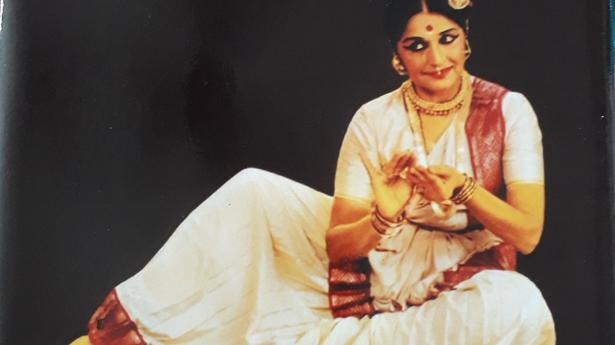
A peek into Kanak Rele’s world
The Hindu
Me and My Mohini Attam takes you through Kanak Rele’s journey of passion and perseverance
Mohiniyattam exponent Kanak Rele’s latest book, Me and My Mohini Attam, is both a biography and an autobiography. While the autobiographical sketches emerge from her single-minded pursuit to establish the first dance training institution in India affiliated to a university, the biographical narrations are by her niece, Radha Khambati.
The 17 chapters of the book unveil many interesting facets of her life and career that do not find a mention in her previous works. The chapter ‘Parichaya’ talks about her strong bond with dance. “In the long life of mine, a life that I have lived and hugged and adored, there is one word that comes through as a thread that binds all the runaway strands into one graceful totality, dance,” writes Kanak. As you finish reading the 331 pages of the book, you are truly in awe of her passion for dance, especially Mohiniyattam.
The first seven chapters serve as a synopsis of Kanak’s life, right from her birth in 1937 to parents Shivdas and Madhuri. One gets a glimpse of Kanak’s days as a child in Santiniketan. “I was brought up in the lap of Nature and those experiences I cannot forget”. She was impressed by Tagore’s nationalistic outlook and zeal for Indian culture. But she had to unwillingly leave the institution when World War II started. Back home, she began to train in dance.
Her meeting the great dancer Uday Shankar was accidental. He was surprised to know that the young Kanak was already learning Kathakali from Raghavan Nair. She later came under the tutelage of guru Panchali Karunakara Panikkar.
The Gujarat-born Kanak had to cross insurmountable barriers once she was initiated into the male-dominated world of Kathakali. Even as the training was in progress, a nagging pain in her leg at the age of ten was diagnosed as polio. But she overcame it with her dedicated dance practice. Later, if she could use dance as therapy for physically challenged children (chapter 11), the inspiration came from her strong footing in Kathakali.
A few chapters in the book focus on significant events in her life such as the death of her father and her mother’s remarriage, pressure from her family to become a doctor, marrying Yatin Rele, studying International Law at Manchester University with specialisation in Civil Aviation and being offered a lucrative job by JRD Tata in his airlines, Yatin’s battle against a serious illness, the birth of her son, her foray into Mohiniyattam under the guidance of P.N. Rajalakshmi of Kalamandalam, and her visits to Kerala for a film on the exponents of the art form.
Kanak faced a new set of challenges when she decided to establish the Nalanda Nritya Kala Mahavidyalay in Mumbai. The book carries a vivid description about it.

National Press Day (November 16) was last week, and, as an entertainment journalist, I decided to base this column on a topic that is as personal as it is relevant — films on journalism and journalists. Journalism’s evolution has been depicted throughout the last 100-odd years thanks to pop culture, and the life and work of journalists have made for a wealth of memorable cinema.










